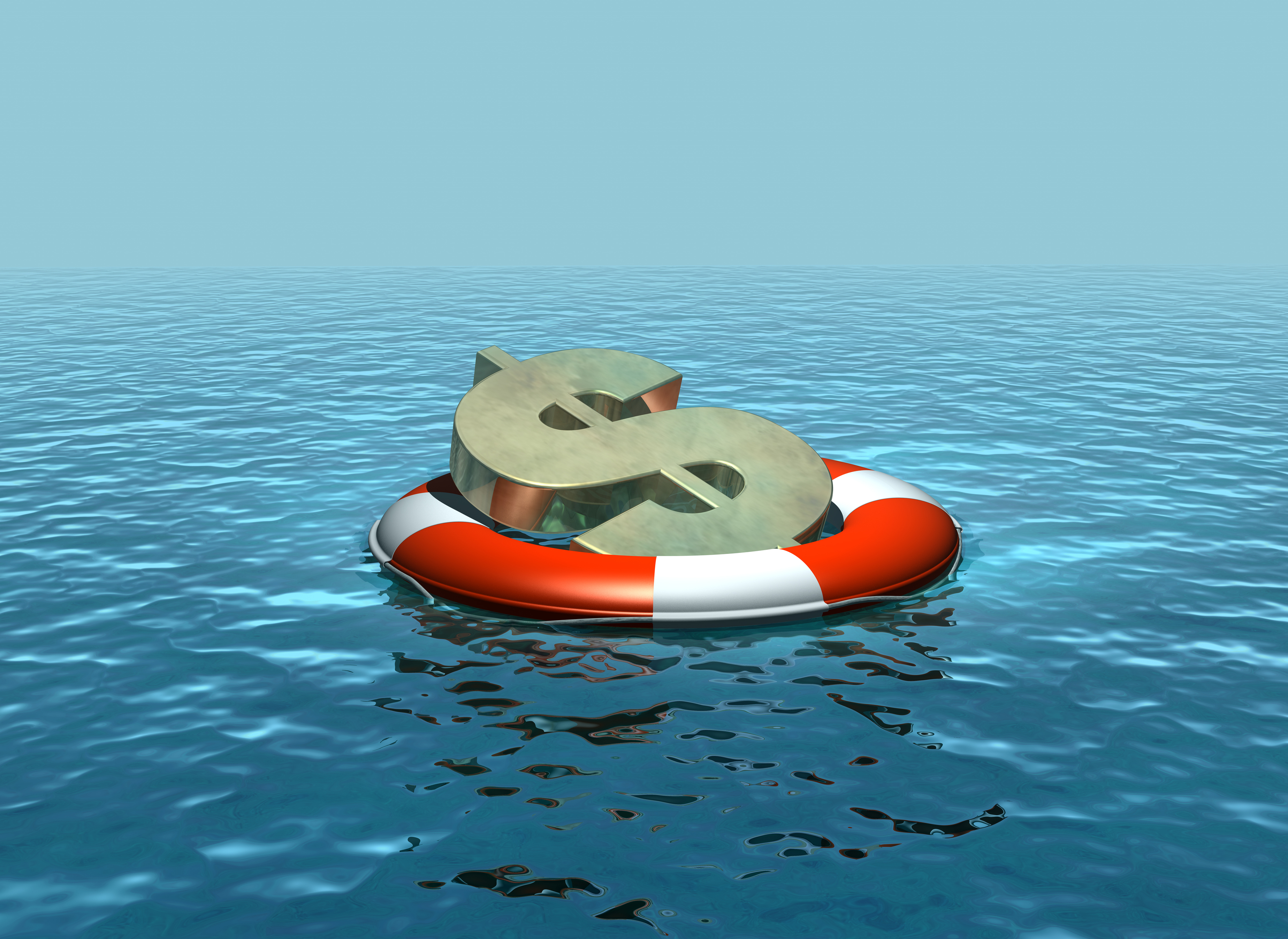6 tips for building a financial safety net fast
Don't let an unexpected emergency clean you out


My financial life started to change completely once I finally was able to put away $1,000 in emergency savings. I remember feeling for the first time like I could breathe freely, without fear of financial ruin hanging at the end of each exhale. The amount wasn't that much in the grand scheme of things, but it was enough to cover most small disasters: the unexpected trip to the ER, the broken sink disposal, the Amazon Prime membership automatically charging me because I had forgotten about it yet again. There was finally a buffer between me and my car breaking down (my most common and loathed budget destroyer) and the peace of mind was well worth the price tag.
The feeling of security was so warming, that I decided to go for the daunting goal of blanketing myself in a three- to six-month emergency fund. It took the better part of two years to hit that goal, but again, it was worth the sacrifice. It allowed my money stress to drop off the grid entirely. I was now standing in an open field of financial freedom — and let me tell you, it felt good.
Even if you don't have one, starting an emergency fund has probably crossed your mind on more than one occasion — most likely when life has hit you with a money-draining curveball. Stowing away cash is something we all know we should be doing to keep a cushion between us and the elements, but creating an emergency fund can seem like an insurmountable challenge when you are living paycheck to paycheck. I remember feeling like $1,000 was way out of my reach when I first began. The $9,000 I needed to fully fund my emergency savings? Forget about it. No way.
The Week
Escape your echo chamber. Get the facts behind the news, plus analysis from multiple perspectives.

Sign up for The Week's Free Newsletters
From our morning news briefing to a weekly Good News Newsletter, get the best of The Week delivered directly to your inbox.
From our morning news briefing to a weekly Good News Newsletter, get the best of The Week delivered directly to your inbox.
At the time, my household income hovered just above the poverty line, and I had a new baby. I didn't feel like I could save, but decided I needed to find a way. Once I made the commitment to get my emergency fund up and running, I knew I had to do it fast so I wouldn't lose steam (or be hit with a new emergency in the meantime).
Here are few tips I used to jumpstart my emergency savings:
1. Get with the gig economy
When it came time to seriously save, I decided to start an in-home daycare to balance staying at home with my need for cash. I also baked specialty cakes and cupcakes on the weekends to bring in even more money. If you have special skills that you can use for a side hustle, get on it! But even if you don't, there are still plenty of side jobs available to suit your schedule and needs. Whether you decide to get on TaskRabbit, become a dog walker, or drive for Uber, your emergency fund will get a serious boost from putting in some extra work hours.
A free daily email with the biggest news stories of the day – and the best features from TheWeek.com
2. Go on a spending diet
If working more isn't an option for you, spending less always is. Cut back your budget by only spending on certain days (and scale down to buy only the essentials) and you will pile away cash quickly.
3. Commit to cash
The psychological benefit of using cash is that it hurts — and therefore we use less of it. Try using only cash for a month, and see if your savings don't beef up considerably. Another added benefit of using cash: You have to decide how much you are going to spend beforehand, and there is no option of going over your set budget.
4. Aim for three
Saving six months of expenses is a huge accomplishment, but unless you're a super-saver, the weight of that goal might bury you. Instead of setting your sights too high, aim to cover three months of expenses in your emergency fund after hitting your first $1,000, then see if you feel like going for six once you reach your halfway mark.
5. Set it and forget it
Your full emergency fund is going to take some time to grow, so you should treat it like you would any other long-term investment. Instead of making the decision to set aside whatever is leftover at the end of the month, make your savings automatically transfer into your emergency fund account each month. Try setting up a money market account that is separate from your checking so you earn a bit of interest and aren't tempted to use it in non-emergency situations.
6. Sell something
I'm not talking about a yard sale (though that's certainly an option, too). Hitting your full emergency savings goal might mean parting with something bigger, like selling a car and opting for a cheaper vehicle or downsizing where you live to sock away extra cash for a while. If you're not willing to give up any big ticket items, that's fine too. You don't have to save your three to six months of expenses in a mad dash. Slow and steady wins the race too. Just make sure you keep moving.
Gemma Hartley is a full-time freelance writer living in Reno, NV. Her work has appeared in The Washington Post, CNBC, Glamour, Women's Health, Redbook Magazine, and more.
-
 7 bars with comforting cocktails and great hospitality
7 bars with comforting cocktails and great hospitalitythe week recommends Winter is a fine time for going out and drinking up
-
 7 recipes that meet you wherever you are during winter
7 recipes that meet you wherever you are during winterthe week recommends Low-key January and decadent holiday eating are all accounted for
-
 Nine best TV shows of the year
Nine best TV shows of the yearThe Week Recommends From Adolescence to Amandaland
